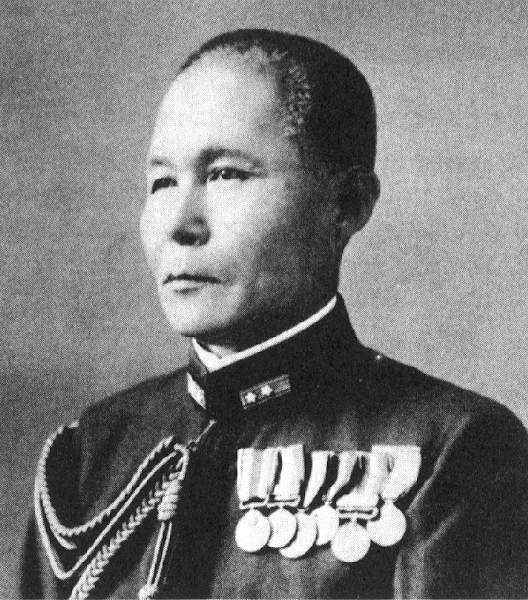Vice Admiral Jisaburo Ozawa (October 2, 1886 – November 9, 1966) was an admiral of the Imperial Japanese Navy during World War II. He is most notable for commanding the Japanese fleet during the Battle of the Philippine Sea, and the Japanese “Decoy” Force during the Battle of Leyte Gulf. He also served as the final Commander-in-Chief of the Imperial Japanese Navy. Ozawa was nicknamed the “Gargoyle” because he was extremely tall (6’7 , 2 m) and was commonly regarded as one of the three ugliest admirals in the Imperial Japanese Navy. He also had a reputation for being both courageous and compassionate towards his men. Many historians regard Ozawa as one of the most capable Japanese flag officers.
Jisaburo Ozawa had a distinguished naval career and succeeded Toyoda as the last Commander-in-Chief of the Combined Fleet in May 1945, when the end of the fleet and surrender of his country was simply a matter of time. A modest man, he refused promotion to admiral because he believed that serving his country was more important than rank.
He was born on 2 October 1886, in rural Koyu County on the Japanese island of Kyushu. Like his contemporaries at the head of the Imperial Japanese Navy, he attended the Imperial Japanese Naval Academy, which he left in 1909, not especially highly placed amongst that year’s graduates. He served as a midshipman on the cruisers Soya and Kasuga and battleship Mikasa. Promoted to ensign, Ozawa served on the destroyer Arare, battleship Hiei and cruiser Chitose, and as a lieutenant, on Kawachi and Hinoki. He specialized in torpedo warfare. He attended the Japanese Naval War College in 1919, afterwards being promoted to lieutenant commander, and was given his first command, the destroyer Take. He subsequently commanded Shimakaze and Asakaze. He served as chief torpedo officer on Kongo in 1925.
Except for a twelve-month visit to the United States and Europe in 1930, he served in staff positions from 1925 until 1933. On 15 November 1934, he was given command of the Maya and of the Haruna in 1935. On 1 December 1936, he was promoted to rear admiral. He continued to serve in various staff positions, including Chief of Staff of the Combined Fleet in 1937 and Commandant of the Imperial Japanese Naval Academy. He was promoted to vice admiral on 15 November 1940.
After the attack on Pearl Harbor, Ozawa became responsible for Japan’s naval operations in the South China Sea as Commander-in-Chief of the Southern Expeditionary Fleet, providing support for the invasion of Malaya. Between January and March 1942, his fleet was involved in the invasions of Java and Sumatra. Despite his conventional naval background, Ozawa was one of the leading advocates of naval aviation in the Imperial Japanese Navy – he was the first high-ranking officer to recommend that the Japanese aircraft carrier forces be organized into an air fleet so that they could train and fight together. No doubt if he had commanded the attack on Pearl Harbor, the outcome would have been different, but he did not replace Chuichi Nagumo as commander of Japan’s carrier forces until 11 November 1942. It was too late, for while Ozawa proved an aggressive and skilled commander, he was overwhelmed by the numerical and technological superiority of the United States at the Battle of the Philippine Sea. After the battle, he offered his resignation, but it was was not accepted.
The remnants of his fleet were present at the Battle of Leyte Gulf against the forces of Admiral William Halsey. Despite being the senior admiral there, the overall Japanese battle plan was to sacrifice his force as a decoy so that Kurita’s Centre Force could attack MacArthur’s invasion forces on the Leyte beaches. Nevertheless, Ozawa commanded his forces well and many believe that he was the foremost amongst Japan’s wartime admirals. Despite this, his fleet ended its career off of the Philippines with flight decks empty for lack of aircraft and pilots. Afterwards, he succeeded Toyoda as the last Commander-in-Chief of the Imperial Japanese Navy from 29 May 1945. He refused promotion to full admiral and remained as vice admiral until the final dissolution of the Imperial Japanese Navy.
He died in 1966 at the age of eighty.
